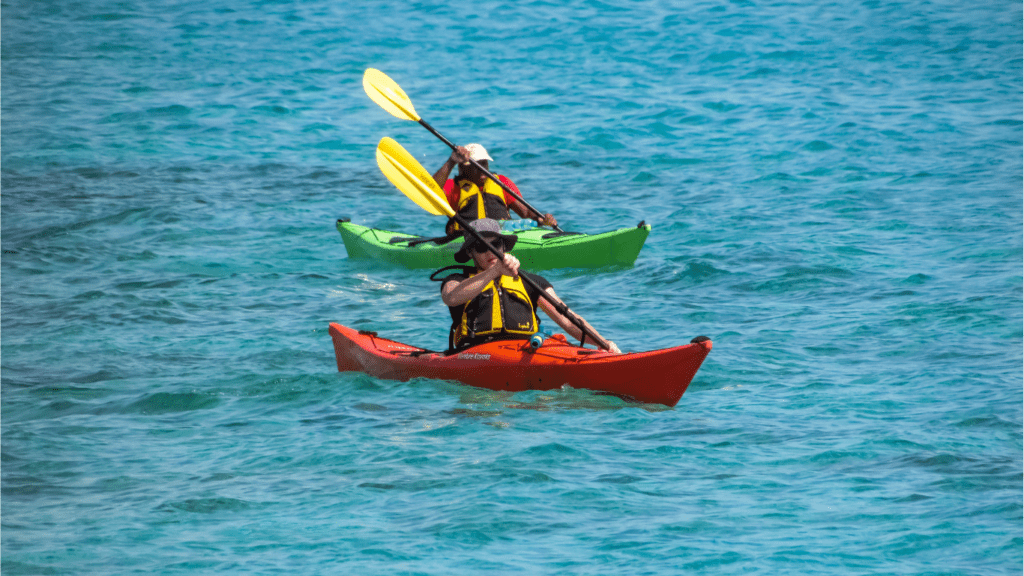The Rise Of Adventure Sports
Adventure sports are seeing unprecedented growth. Market reports show a steady 21% annual increase in participation since 2015. Travelers are not just looking for leisure; they want experiences that challenge both body and mind. This shift in preference is driving a robust demand for destinations offering diverse activities.
Several factors contribute to this trend. The rise of social media plays a significant role. Platforms like Instagram and YouTube make it easier to share experiences in real-time. Stunning visuals of skydiving in Dubai or trekking in Nepal inspire others to seek similar adventures.
Improved accessibility also strengthens the movement. Technological advancements in transportation and communication mean previously unreachable spots are now within grasp. Affordable flights and better infrastructure in remote locations make it easier to embark on these thrilling journeys.
Government initiatives further fuel the surge. Many countries recognize the economic benefits and are investing heavily in promoting adventure tourism. For example, New Zealand’s government allocated NZD 35 million to outdoor activity development in 2019 alone.
Increased awareness of health and fitness is another contributor. More people are committed to active lifestyles and seek vacations that align with their fitness goals. Activities like:
- rock climbing
- surfing
- mountain biking
offer both physical challenges and unique experiences.
Lastly, environmental consciousness supports the trend. Eco-friendly tourism, often linked with adventure sports, attracts travelers who wish to minimize their footprint while exploring nature. Activities like kayaking in pristine rivers or hiking in protected areas offer sustainable options without compromising on excitement.
This rise in adventure sports is clearly reshaping tourism. It’s clear that the blend of adrenaline, physical challenge, and cultural exploration resonates deeply with modern travelers.
Popular Adventure Sports Driving Tourism

Adventure sports are a significant driver for international tourism, offering thrill-seekers a range of exciting activities across different terrains.
Hiking And Trekking
Hiking and trekking attract outdoor enthusiasts to some of the world’s most breathtaking locales. Destinations like the Himalayas, the Inca Trail in Peru, and the Pacific Crest Trail in the U.S. offer diverse experiences for adventure travelers. Many countries, including Nepal, Switzerland, and Canada, invest in developing and maintaining trails to enhance visitor experiences. Annual statistics report a 15% increase in tourist visits to hiking destinations, further fueled by stunning landscapes and the desire for physical achievement.
Water Sports
Water sports, such as scuba diving, surfing, and kayaking, draw adventurers to coastal regions. The Great Barrier Reef, Hawaii, and Costa Rica are renowned for their vibrant marine life and pristine waters. Operators provide certified training and safety measures, making these activities accessible to various skill levels. Diving schools in Thailand and Australia, for instance, see a steady influx of tourists pursuing underwater exploration. The global water sports industry has seen a 12% growth rate annually, with popular destinations reporting higher tourist numbers.
Extreme Sports
Extreme sports like bungee jumping, skydiving, and mountain biking often top the list for adrenaline junkies. Queenstown in New Zealand, known as the adventure capital, lures tourists with its range of heart-pumping activities. Governments encourage this sector by investing in top-notch safety protocols and advertising campaigns. Locations like Interlaken in Switzerland and Moab in Utah also see significant tourist traffic due to their extreme sports offerings. Surveys indicate a 10% year-on-year increase in travelers seeking extreme sports experiences, contributing substantially to local economies.
Economic Impact On International Tourism
Adventure sports play a significant role in boosting international tourism, leading to positive economic outcomes for host destinations.
Job Creation
Adventure sports tourism creates numerous job opportunities. Guide services, equipment rental shops, and hospitality businesses (such as hotels and restaurants) all benefit. For instance, in New Zealand, the adventure tourism sector has generated thousands of jobs, supporting local economies. Employment opportunities also extend to ancillary services like transportation and logistics, further broadening the job market.
Local Business Growth
Local businesses see substantial growth due to the influx of tourists. Adventure tourism encourages spending at local shops, restaurants, and cultural attractions. Popular destinations like Queenstown experience increased revenue from not only adventure sports but also from secondary spending. This boost in business activity helps sustain local economies and promotes further investment in community infrastructure.
Cultural Exchange Through Adventure Sports
Adventure sports create opportunities for cultural exchange as travelers engage with local communities and traditions, enriching their experiences and understanding of diverse cultures.
Interaction With Locals
Interaction with locals occurs naturally through adventure sports. While hiking or trekking in remote regions, adventurers often stay in local guesthouses or homestays, providing direct contact with the residents. For instance, trekkers in Nepal’s Annapurna Circuit share meals with local families, learning about their daily lives and customs. Surfing in Bali connects travelers with local instructors, fostering cultural understanding and friendships. This interaction enhances the travel experience, offering deeper insights into the local way of life.
Preservation Of Traditions
Preservation of traditions is a notable benefit of adventure tourism. Adventure sports draw attention to cultural practices and encourage their continuation. Traditional dance performances, storytelling, and craftsmanship are often showcased during these tours. For example, indigenous hiking guides in the Andes share ancient Incan knowledge and rituals with trekkers. Water sports destinations like Hawaii include cultural tours that highlight traditional Hawaiian navigation techniques and celebrations. By participating in these activities, travelers help sustain local traditions while gaining a richer cultural perspective.
Environmental Considerations
Environmental considerations are becoming central to adventure tourism as both providers and travelers recognize the importance of preserving natural landscapes.
Conservation Efforts
Conservation efforts are critical in maintaining the ecosystems that adventure tourists explore. Organizations like the Adventure Travel Conservation Fund (ATCF) support projects focused on protecting and rehabilitating natural sites. For instance, ATCF-funded projects include habitat restoration and species protection, ensuring that destinations remain pristine for future generations. Governments also enforce regulations to limit environmental damage from activities like scuba diving and trekking. These include restrictions on visitor numbers and mandatory use of eco-friendly equipment.
Sustainability Practices
- Sustainability practices provide a framework for minimizing the environmental impact of adventure tourism.
- Eco-friendly accommodations and tours prioritize renewable energy sources and waste reduction.
- Many lodges in the Himalayas now use solar energy and practice water conservation.
- Tour operators advocate for responsible travel by offering carbon offset options and encouraging low-impact activities.
- The Leave No Trace principles, adopted by numerous adventure travel companies, educate travelers on minimizing their footprint, from packing out waste to staying on designated trails.



